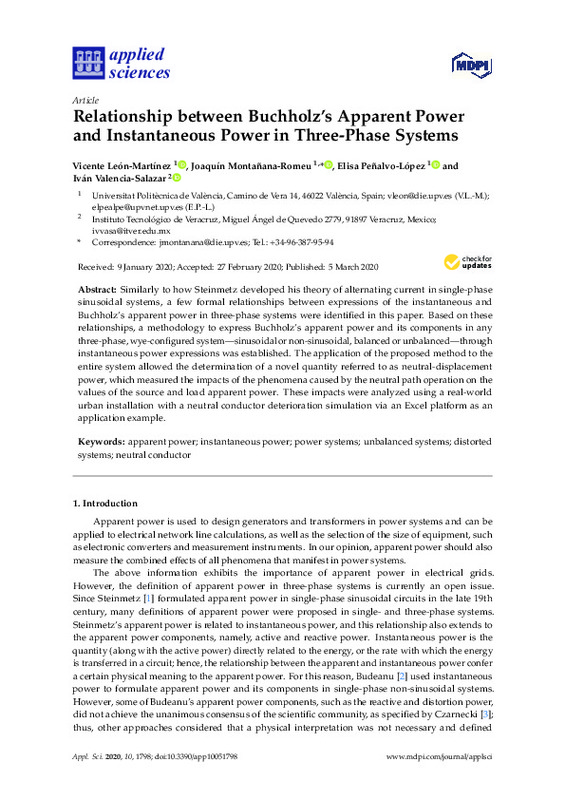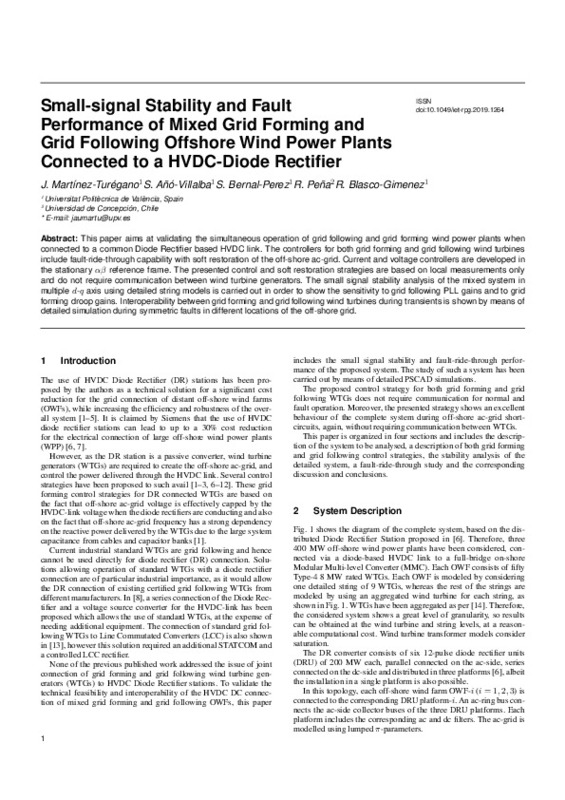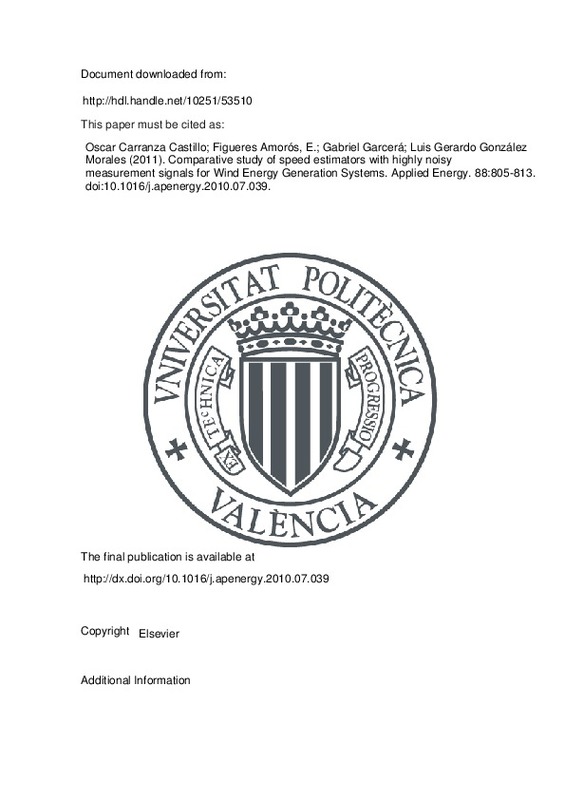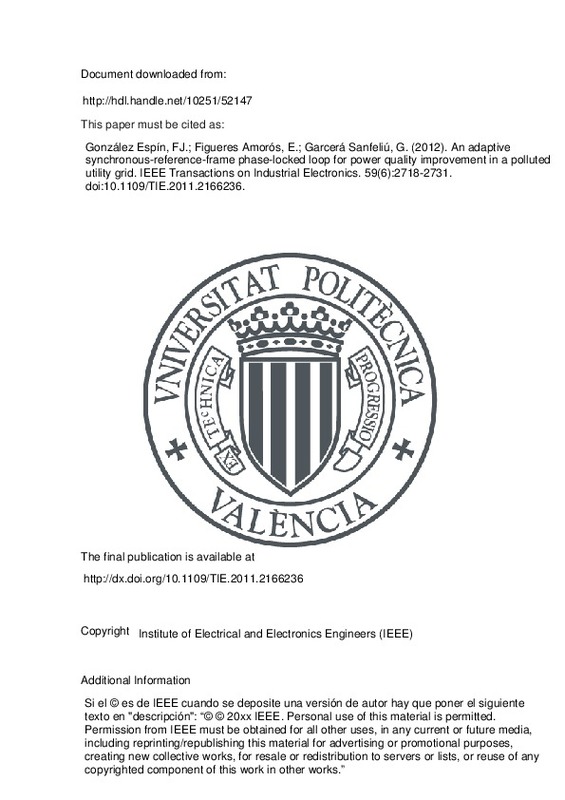Czarnecki, L. S. (1987). What is wrong with the Budeanu concept of reactive and distortion power and why it should be abandoned. IEEE Transactions on Instrumentation and Measurement, IM-36(3), 834-837. doi:10.1109/tim.1987.6312797
Czarnecki, L. S. (1988). Orthogonal decomposition of the currents in a 3-phase nonlinear asymmetrical circuit with a nonsinusoidal voltage source. IEEE Transactions on Instrumentation and Measurement, 37(1), 30-34. doi:10.1109/19.2658
Czarnecki, L. S. (2008). Currents’ Physical Components (CPC) concept: A fundamental of power theory. 2008 International School on Nonsinusoidal Currents and Compensation. doi:10.1109/isncc.2008.4627483
[+]
Czarnecki, L. S. (1987). What is wrong with the Budeanu concept of reactive and distortion power and why it should be abandoned. IEEE Transactions on Instrumentation and Measurement, IM-36(3), 834-837. doi:10.1109/tim.1987.6312797
Czarnecki, L. S. (1988). Orthogonal decomposition of the currents in a 3-phase nonlinear asymmetrical circuit with a nonsinusoidal voltage source. IEEE Transactions on Instrumentation and Measurement, 37(1), 30-34. doi:10.1109/19.2658
Czarnecki, L. S. (2008). Currents’ Physical Components (CPC) concept: A fundamental of power theory. 2008 International School on Nonsinusoidal Currents and Compensation. doi:10.1109/isncc.2008.4627483
CZARNECKI, L. (2015). Currents’ Physical Components (CPC) in Three-Phase Systems with Asymmetrical Voltage. PRZEGLĄD ELEKTROTECHNICZNY, 1(6), 42-49. doi:10.15199/48.2015.06.06
Emanuel, A. E. (1999). Apparent power definitions for three-phase systems. IEEE Transactions on Power Delivery, 14(3), 767-772. doi:10.1109/61.772313
Pajic, S., & Emanuel, A. E. (2006). Modern Apparent Power Definitions: Theoretical Versus Practical Approach—The General Case. IEEE Transactions on Power Delivery, 21(4), 1787-1792. doi:10.1109/tpwrd.2006.876647
Depenbrock, M. (1993). The FBD-method, a generally applicable tool for analyzing power relations. IEEE Transactions on Power Systems, 8(2), 381-387. doi:10.1109/59.260849
Ferrero, A. (2007). Definitions of electrical quantities commonly used in non-sinusoidal conditions. European Transactions on Electrical Power, 8(4), 235-240. doi:10.1002/etep.4450080403
Curtis, H. L., & Silsbee, F. B. (1935). Definitions of power and related quantities. Electrical Engineering, 54(4), 394-404. doi:10.1109/ee.1935.6539147
Emanuel, A. E., & Orr, J. A. (s. f.). The effect of neutral path impedance on voltage and current distortion. Part I. symmetrical and balanced three-phase systems. 2004 11th International Conference on Harmonics and Quality of Power (IEEE Cat. No.04EX951). doi:10.1109/ichqp.2004.1409351
Emanuel, A. E., & Orr, J. A. (s. f.). The effect of neutral path impedance on voltage and current distortion. Part II. Imbalanced three-phase systems. 2004 11th International Conference on Harmonics and Quality of Power (IEEE Cat. No.04EX951). doi:10.1109/ichqp.2004.1409350
Blasco, P. A., Montoya-Mira, R., Diez, J. M., Montoya, R., & Reig, M. J. (2019). Compensation of Reactive Power and Unbalanced Power in Three-Phase Three-Wire Systems Connected to an Infinite Power Network. Applied Sciences, 10(1), 113. doi:10.3390/app10010113
Akagi, H., Kanazawa, Y., & Nabae, A. (1984). Instantaneous Reactive Power Compensators Comprising Switching Devices without Energy Storage Components. IEEE Transactions on Industry Applications, IA-20(3), 625-630. doi:10.1109/tia.1984.4504460
Czarnecki, L. S. (2006). Could Power Properties of Three-Phase Systems Be Described in Terms of the Poynting Vector? IEEE Transactions on Power Delivery, 21(1), 339-344. doi:10.1109/tpwrd.2005.852353
Jeon, S. (2015). Properties of the generalised power theory: universality and partitioning/augmentation properties. IET Generation, Transmission & Distribution, 9(15), 2126-2134. doi:10.1049/iet-gtd.2014.0303
Czarnecki, L. S. (2015). Critical comments on the Conservative Power Theory (CPT). 2015 International School on Nonsinusoidal Currents and Compensation (ISNCC). doi:10.1109/isncc.2015.7174713
Artemenko, M. Y., & Batrak, L. M. (2017). The new formula for apparent power and power losses of three-phase four-wire system. 2017 IEEE 37th International Conference on Electronics and Nanotechnology (ELNANO). doi:10.1109/elnano.2017.7939784
[-]












